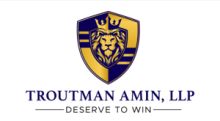Absolutely massive case here guys.
And gees, we bring in a Viceroy and days later a company called “Viceroy” is facing a massive suit brought by the FTC and DOJ in a lawsuit that could result in a ruling that bans lead sales.
No publicity is bad publicity right? But still, weird.
Hold on tight here guys. It is about to get bumpy.
On the heels of the big FTC press announcement this week–thanks to the special Countess and Duchess for covering that–we are digging into this massive new complaint against QUYNH TRAN, a/k/a/ Kayli Tran, individually and as an owner of VICEROY MEDIA SOLUTIONS, LLC and VOLTRON INTERACTIVE, LLC.
This thing is just brutal and it is shaking up the entire lead generation ecosystem. Big names like DMS and Yodel–although not named as Defendants– appear to be in the FTC’s crosshairs as well (although they were likely saved by contract terms and emails requiring the Defendants to have consent to send calls.)
And this all boils down to misleading webform submissions in connection with lead generation. But there is a surprise twist ending that you have to see to believe.
The basics. The Defendants operated websites designed to help people find a new job. Seems innocuous enough. People would visit the website and provide information about the job they were seeking and that information would be sent to companies that might be able to help. So far, so good in my view.
Out of the gate though you know something is a bit off because these guys sold 46,562,557 leads and only made $3,875,758 in revenue. That’s like 8 cents a lead. Hmmm. With leads that cheap there was clearly very little quality control and the companies buying these leads must have been making a killing reselling them…
And let me back up to the number again– 46,562,557 leads. Over a 3 year span. That means over 15MM people visited quick-jobs.com and localjobsindex.com each year and filled out a form. For comparison, tcpaworld.com has never had 15MM visitors over 4 years, total. And it is considered–by me–to be the best website in the world.
Now, without question clever online buys and direct advertising can drive traffic to any old website–so we’re not counting on people stumbling upon these websites– but to drive traffic costs money, and definitely (it seems) more than 8 cents per click. So either these guys were spending more to drive the traffic that resulted in the leads than they were making selling the leads–dumb and unlikely–or they were just flat selling fake leads.
Let me pause at this moment to remind everyone about Responsible Enterprises Against Consumer Harassment (R.E.A.C.H.) the most respected and highly regarded group of companies operating in the direct-to-consumer marketing space and the REQUIREMENT that fraud detection be deployed on all websites that sell leads to R.E.A.C.H. members. No surprise the leads in the R.E.A.C.H. ecosystem do not cost 8 cents.
But all of this is prelude. Let’s get to the show.
The thrust of the complaint–which you can read here Viceroy Complaint –boils down to one line consumers are “misled by these websites into providing their personal information because it appears that this information is required and necessary to review job search results.”
Here’s what the website looked like (allegedly):
(I know this is blurry but it is the best I can do.)
So notice the big fields for personal information (name phone number etc) and the big blue continue button. This screen allegedly is presented to the consumer early in the flow. Rather obviously looking at this form you would think you have to fill this form out–with personal information required–to move forward and see the next screen (and presumably the 250 sales jobs available in the person’s zip code.)
But for the eagle-eyed you will see down at the very bottom in super light grey font and with a big gap the phrase “Continue to Results.” Also there is a very small hyperlink that says “click here” embedded in the fine print disclosure, that is likely meant to look like a terms and conditions link but is also a second path through to results without the consumer providing their information.
The FTC’s theory is that by hiding the path to results behind the much larger path to supply personal information the consumer is being tricked into thinking they have to provide their information to get results, and I must say–I agree. This is a pretty obvious dark pattern– the consumer is tricked into one path on a website and prevented from proceeding down the other, presumably more favorable, path. No good.
But what is confusing me is why they did this to begin with? That is to say, why couldn’t the website have made it an absolute barrier to obtain results that the consumer supply their personal information and provide consent? True, consent cannot be a condition “of purchasing any good or service” but, unless I am missing it, there was no good or service for sell on the website. It, apparently, just served to connect people with job offers. So it appears to me the website operators were tricking consumers for no reason whatsoever.
The FTC is concerned about a few other VERY common elements of the website, however, and those in the lead generation space need to pay very close attention here. The website also allegedly:
a. Conceal the identity of their marketing “partners” within a hover box, meaning the text is not visible without hovering the mouse pointer over a specific term, which is in some cases virtually indistinguishable from surrounding text;
b. List up to 90 such marketing “partners” in a hover box;
c. Use buttons labeled with terms such as “confirm” and “continue” that do not put consumers on notice of the legal significance of the actions they are taking;
d. Present disclosures in blocks of small, gray text against a white background;
e. Use disclosures that are disproportionately small compared to more prominent, often contradictory, messages and other distractions on the same page; and
f. Obtain consent through hyperlinks to other webpages
With the exception of f. I have literally warned folks about every single one of these issues on TCPAWorld.com. Cannot emphasize enough that regulators read–and I presume love and enjoy–my blog. If the Czar is suggesting something, you should be listening because “they” routinely are.
Now did TCPAworld.com contribute to this list of issues? Not directly. I.e. no one from the FTC or the AGs or DOJ reached out to me directly. And perhaps they derived their own similar list from the source material–i.e. case law. But either way when the Czar blogs you should log. (You will notice a LOT of this comes from the old Berman case I made so much about that most of you yawned at.)
Moving on take aways here are clear:
-
Use actual hyperlinks that are blue (or bright pink) and do not try to hide your hyperlinked disclosures;
-
Be cautious of large numbers of partners on your hyperlink page. We know the FCC’s NPRM is considering doing away with this practice completely. We also know that lists containing over 5,000 partners are per se dead moving forward. This is the first time we have seen a list as low as 90 considered potentially misleading (this is just the FTC’s enforcement position in a single filing, however. It has not been adjudicated. And I do NOT think a list with 90 partners will be found to be per se invalid by a court without any binding rule to that effect. But we will find out…);
-
How many times have I said that using “continue” as the button language without an asterisk or other language (like “and accept terms”) will get you killed because consumers may not know they are accepting terms? Now this issue can be overcome if the rest of the website is well designed–i.e. where the consumer still plainly knows they are providing consent–but that is the exception;
-
Do NOT use light grey disclosures against a white background if you want these things enforced–the R.E.A.C.H. standards require black against white for certainty;
-
Using disclosures that are small is OK–people are used to encountering fine print–but it can’t be too TINY especially when compared to the rest of the font on the page. But really it is distracting elements that are the most problematic here. Nice easy to understand flows work well. Even if there is small print below larger print that is ok. What is not ok is trying to trick consumers into ignoring the smaller print completely;
-
As to “obtaining consent through hyperlinks to other web pages” just be cautious that you are not using a Russian-Nesting-Doll strategy with obtaining consent. If the consent form isn’t obvious and the scope of consent isn’t plainly presented in one cohesive disclosure it is NOT enforceable. I never mentioned this one before because… well..I thought it was obvious.
But getting past all of this, it is time for the big twist ending.
None of this may really matter because what the DOJ is actually arguing is that these websites can’t sell consent anyway.
Gasp.
Here is the CRITICAL language:
Defendants’ websites do not evidence the willingness of the consumer to receive calls delivering prerecorded messages “by or on behalf of a specific seller,” as required by the TSR, 16 C.F.R. § 310.4(v)(A)(iii) (emphasis added), given the lists of numerous and varied entities presented on the websites.
Further, Defendants are not a “seller,” or legal agents of a “seller,” as defined by the TSR, 16 C.F.R. § 310.2(dd), so their websites cannot meet the TSR’s requirement that, for calls delivering prerecorded messages, “the seller has obtained from the recipient of the call an express agreement, in writing” to receive the call, 16 C.F.R. § 310.4(v)(A) (emphasis added). As it pertains to consent to receive calls delivering prerecorded messages, the TSR simply does not allow Defendants’ “consent farm” business model
Get it?
The FTC and DOJ are being very tricky here. They have buried the lead. They went and picked on a company that presumably is not very well funded and was doing a bunch of bad and tricky stuff. And they plan to use THIS CASE as a vehicle to litigate the issue of whether leads can be sold under the TSR at all.
Now I am already on record on this point. Multiple times. The FTC’s new “one to one” consent position is NOT what the regs say and is inconsistent with the common law. It is WRONG as a matter of law.
But that isn’t stopping the FTC from trying to litigate the issue and have a court rule in its favor. And in a clever move, they are raising the issue for the first time in a complaint against a company that is unlikely to realize the fate of the entire industry rests on its shoulders.
I know no one is going to do this, but it seems like ANY COMPANY THAT MAKES A LIVING SELLING LEADS SHOULD PROBABLY INTERVENE IN THIS SUIT RIGHT NOW.
R.E.A.C.H. will likely need to submit some amicus filings here when the time comes.




 i
i


